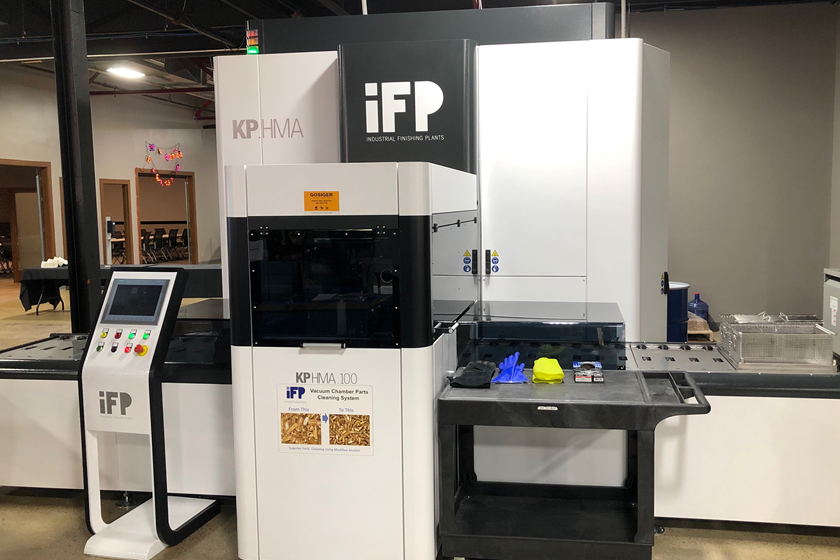ONGOING DISCUSSION OF DI WATER QUALITY
Question: In an article that you wrote in the Aluminum Anodizing Clinic regarding the quality of deionized water, you said that high-quality DI water is very important in the anodizing bath.
Question:
In an article that you wrote in the Aluminum Anodizing Clinic regarding the quality of deionized water, you said that high-quality DI water is very important in the anodizing bath. Why is this?
Why does stopping and starting the flow of DI reduce the efficiency of the DI system? R.H
Answer:
By ensuring that you use good-quality DI water (resistance of >200,000 ohms) to make up the anodizing electrolyte, you start with a lower level of bath contaminants than if you used city or well water. Some electrolytes are more sensitive than others, however. For example, the chromic acid electrolyte (Type I anodizing) is more sensitive to contaminants than the sulfuric acid (Type II) bath. Let’s face it, sulfuric acid baths have been made up with tap water (sometimes even well water) since the beginning of time. If you don’t have DI water, use RO water. If you don’t have RO water, use tap water. They all work, but the higher the quality the better—when you use water that is free of contaminants you reduce the probability of future quality problems.
Featured Content
Even more important than using good-quality DI water for the electrolytes is using it to make up dye baths and sealing baths. Dye baths are much more sensitive to contaminants than anodizing baths. With dyes, the fewer contaminants in the bath, the longer the bath will give good results. Introduction of contaminants into the dye bath can be greatly reduced if there is a DI rinse tank prior to the dying tanks, also. Dye baths are especially sensitive to dissolved aluminum, sulfates and chlorides, as well as the magnesium, calcium and iron found in hard tap or well water. These elements eventually interfere with the dyeing process and can result in longer dying times, blotchy dyeing and less dye being absorbed by the anodic film.
Dyes are expensive. You want these baths to last as long as possible. Using DI water in the dye bath and in the rinse just prior makes sense for producing the highest quality coatings at minimum cost.
The same general principal applies to sealing baths. Sealing baths are sensitive to varying levels of sulfates, chlorides, phosphates, silicates and just plain hard water. When excessive levels of these contaminants are present, it can take longer to seal, produce sealing smut, or not seal at all. So it makes sense to make up the sealing bath with DI water. Also, a good DI rinse before the seal reduces the chances of dragging these contaminants into the bath and results in better, smut-free sealing and prolongs the life of the bath.
Two answer your second question, if you start and stop the flow of water through a demineralizing resin bed system and watch the readout of the quality of water as it passes thru the outlet pipe, you will probably see that when the system flow is shut off for a while the water quality is lower for a few minutes upon start-up of the flow again.
The length of time needed to get the quality of water required can vary from system to system. The reason for this is each time the water flow of a DI system is shut off, the water in the resin bed equilibrates from the top to the bottom. That is, the incoming (tap or RO) water at the top of the resin bed “contaminates” all of the stagnant water in the bed.
This means that the first water out of the bed looks more like the water at the top of the bed. As soon as the lower-quality water is pushed all the way through the bed, the DI equilibrium reestablishes itself and you are back into the quality zone. The same type of thing happens with mixed-bed and two-bed systems.
Perhaps the best way to avoid this is to have a DI storage tank that can be filled periodically. This avoids most of the stop-start action you get when DI water is used directly from the deionizing equipment. Obviously, if deionized water is used directly from the system, but is used in a continuous flow, the starting and stopping has been eliminated and it would not be a problem.
It has been pointed out by some that when DI water is stored, even in a closed-top tank, it absorbs carbon dioxide from the air. This is true, and when carbon dioxide is mixed with water it forms carbonic acid, a very weak acid that can lower the pH of the solution very slightly. I have never known this to be a problem in an anodizing line. Eliminating hardness, sulfates, phosphates, silicates etc., is more important than the small amount of carbonic acid that may be introduced into the system.
RELATED CONTENT
-
Test Methods For Evaluating Anodized Aluminum
Benefits of anodizing include durability, color stability, ease of maintenance, aesthetics, cost of initial finish and the fact that it is a safe and healthy process. Maximizing these benefits to produce a high–performance aluminum finish can be accomplished by incorporating test procedures in the manufacturing process.
-
Cleaning, Pretreatment to Meet Medical Specs ISO 13485 or FDA 21 CFR820
Maximilian Kessler from SurTec explains new practices for industrial parts cleaning, metal pretreatment and decorative electroplating in the medical device industry.
-
Preventing Anodizing Cathodes from Turning Red
While the red color may not be desirable, anodizing expert Drew Nosti says it poses no particular problem to a successful anodizing process.



















